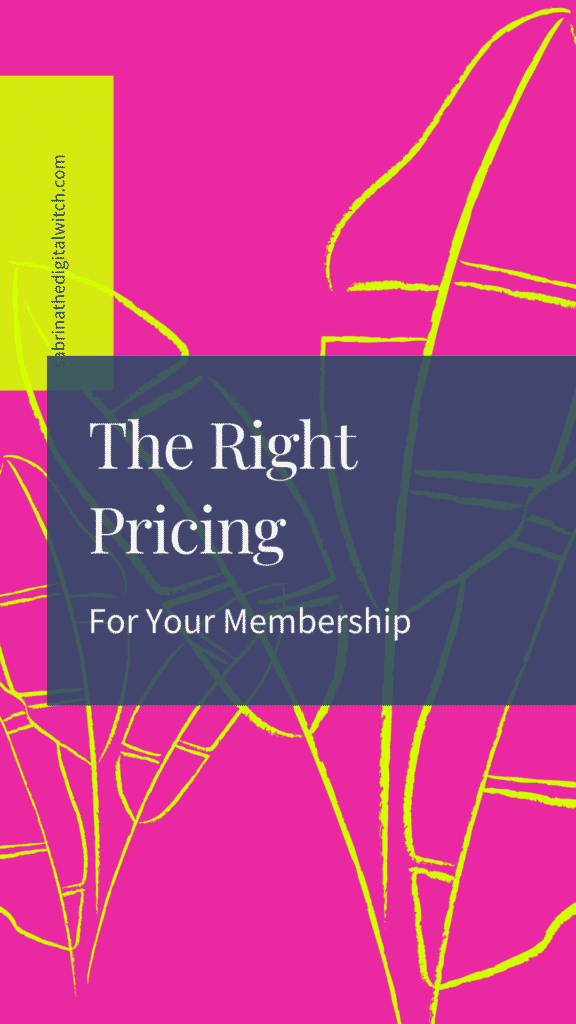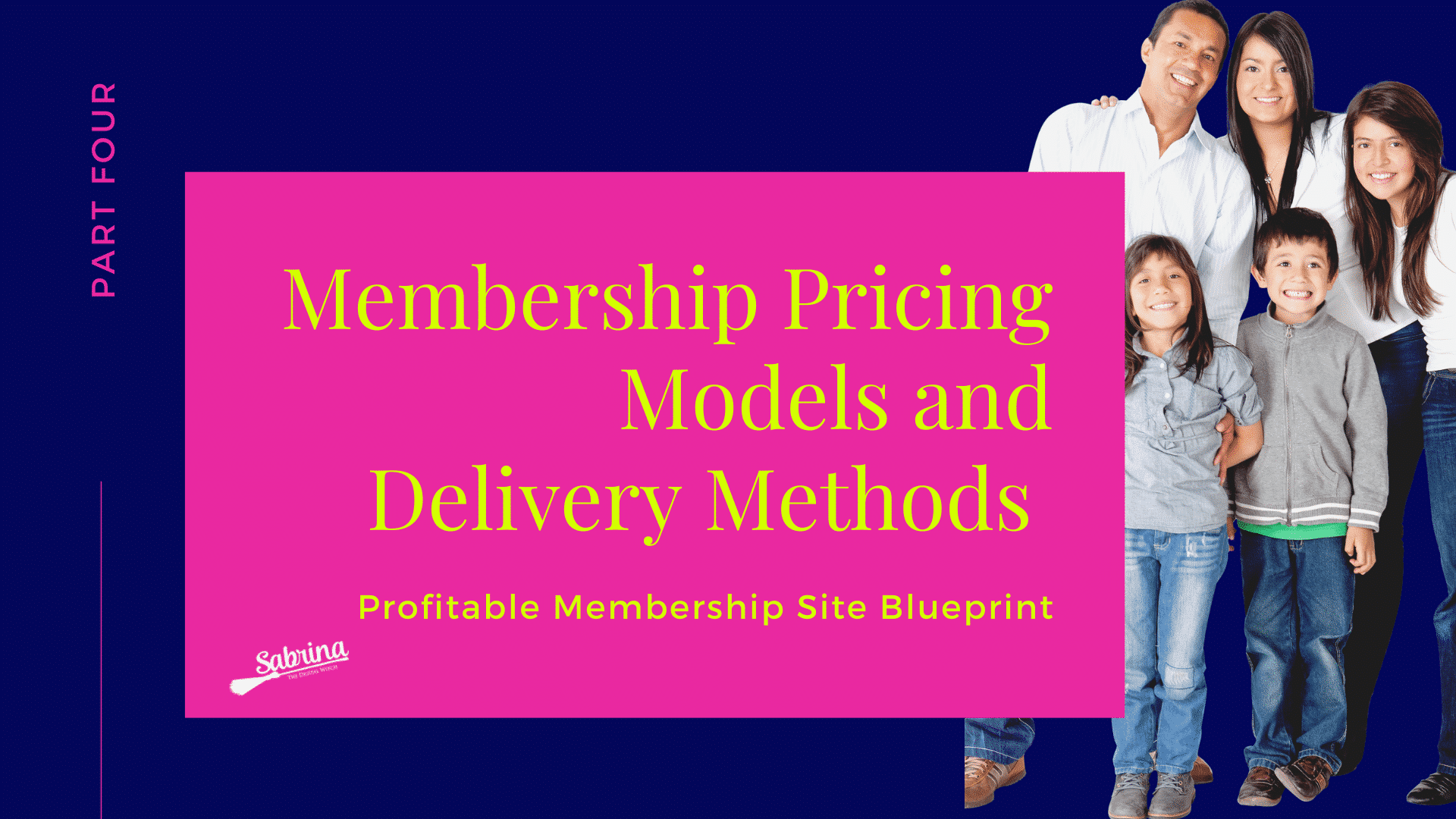Pricing is crucial, but it’s a highly misunderstood business decision. Creating the right pricing for a membership site, especially one that’s just launching is daunting, even successful online entrepreneurs struggle with this.
While there are many ways to adjust your pricing plans, once your site is up and running, starting with the right foundation will make it easier to improve. If you don’t have a lot of experience, study how your customers react to certain tactics. Setting a pricing strategy can be a challenging task. There’s no easy answer on how to create the right pricing strategy, but here are 8 pricing models worth exploring.
Table of Contents
Choosing The Right Pricing

Fixed-Term Pricing Model
For a fixed-term pricing model, the membership levels have a set term with expiration. And members must renew to maintain their membership. This pricing model is commonly used for a set term of the calendar year (January 1 to December 31).
This is a popular pricing model for traditional organizations and benefactor groups that report membership annually and require members to “renew” their term every year.
You can be creative and innovative with this pricing model by offering discounts for the early renewals, giving discounts for the purchase of multi-year memberships in advance or you can prorate membership for those who sign up mid-term.
This pricing model is great if you don’t want to produce, edit and update content regularly. But if you’re continually creating and adding new content on your site, you may give too much for too little with this model. Because members who have paid a flat fee to access your content will be receiving value from you every time you add new content—and you’re not profiting from it.
Recurring Subscriptions with Fixed Price per Period
This is a common pricing model, where you can charge a specific price “per month” or “per year” for the life of the membership. Some payment gateways also allow pricing per week or custom periods like every 3 months.
Recurring subscriptions work well for newsletter-based membership sites, sites where experts or coaches create the content and listing sites and online social communities.
However, to use this pricing model, you must deliver value each term continually. Because if your members are paying you weekly or monthly, you must deliver “new valuable material” each week or month.
It’s easy to set up this model with the Stripe or PayPal. You can do this by setting an initial payment and a recurring subscription of the term of your membership.
Free or Reduced-Rate Trial Periods
I’m not a fan of this model, but it’s common. If your goal is to get more people to use your service or product, you can use the free trial model. And when you’re ready to earn money, switch to a model that charges based on the value of your service or product upfront.
The free trial model charges a lower rate initially, hoping to hook the members into maintaining their membership after the trial period ends. This pricing model is commonly used by online software and tools, and other digital communication or financial tools.
When using this model, it’s essential to remember you must prove you’re the worth the full-price membership during the trial period. Don’t price yourself so high that people can’t maintain membership at the full rate. Also, don’t deliver all the value of your membership during the trial period because there’ll be no reason for members to stay.
If you want to use this model, offer a reduced rate trial instead of a free trial. This’ll force your members to be committed to your product and it’ll protect you from the workload created by tons of free trial members that don’t intend to stick around.
Front-Loaded Pricing Model
This is where you can charge a higher amount at sign up and then charge a lower rate at each term. For example, you can charge a single upfront higher cost or an installment such as $150 per month for the first 3 months and then $15 per month.
This is a great option if you deliver the most value in the first few months. And it’s a common pricing option among health and fitness websites that focus on weight loss.
Installment Plans
Installment plans are like the front-loaded membership, but they don’t have the ongoing, recurring payment. This model is perfect if you want to charge a high price, but you know that your audience can’t afford the large expense in one payment.
You can set up this option by setting a first payment and a recurring payment of the term of your membership, with a “payment limit.” Also, you can opt to set an end date on memberships.
For example, for a membership level that you want to charge $600 for 4 months and keep the member’s membership for 1 year, you can set:
- Initial payment to $150
- Recurring subscription to $150 per month
- Billing cycle limit to 3
- Expiration of 1-year
However, when using the installment plan, make sure you lock a member in, so they pay the full installment. Because if you’re giving members a product worth $600 and they cancel in their subscription the second month, you’ll lose a huge chunk of money.
One-Time Pricing Model
You can combine lifetime membership with almost any pricing model you choose. You can opt to offer a reduced-price lifetime plan for a limited time as an incentive to early adopters. Or you can have the lifetime plan always available to those members who want to pay once without having to worry about recurring subscriptions.
To know what to charge for the lifetime plan, take a multiple of your monthly membership, for example, 30x a monthly membership or 2.5x an annual membership rate. Essentially, your lifetime plan should offer the same “member lifetime value” as someone paying per period. Therefore, having a good estimate of your renewal rates and member lifetime value will help you find the sweet spot.
Also, you can opt to use a higher-priced lifetime plan as a decoy to make your regular price look like a better deal. Doing this will make sure you get a bigger bonus when a member opts for the high-priced lifetime plan.
It’s easy to set up this model with the Paid Memberships Pro plugin. You can do this by setting a one-time initial payment on the membership level with no recurring subscription or expiration.
Group Pricing/Umbrella Membership Plan
This pricing model is useful if you have a breakdown of individual members and corporate or company-type members.
With this model, take the individual member price and offer a discount to the parent account that is buying more than one membership at a time for a group of people. For instance, you can offer a single membership for $150 per month and a group membership for $600 for a 5-member organization.
Add-on Pricing Model
For this model, you’d charge users a base price, and they have the option to select additional membership features. These features can be added benefits for a blog category or newsletter subscription, or a la carte features of memberships, such as consultation phone calls, “one-off products,” or annual resume review services.
This model is commonly used by traditional newspapers that provide online and optional physical printed editions.
Membership Durations

Aside from considering how much you should charge you also have to consider how often you should charge.
It’s easy to calculate a monthly price for the membership fee, but there are many durations you can choose from. Here are some membership durations and some pros and cons so you can decide which makes the most sense for your business.
Monthly
This is the most common membership duration around, and it’s for a good reason.
Membership site owners like monthly payments because it offers them a predictable, steady income per month. And it inspires members to log in often to make the most out of their membership fee.
A monthly duration is perfect for membership site businesses that drip feed content. You get to offer members continuous value and they continue to pay for that value.
Also, if there’s an issue with a member’s payment method, you only lose one month’s payment.
For the member, if they use a site and they decide that it’s not a good fit for them or it doesn’t fit their budget, they get to cancel the membership after the first month.
The major disadvantage of a monthly membership subscription is the reduced risk for members. Since it’s easy for them to cancel their membership, they’re not too invested, money-wise.
And as the site owner, it becomes difficult for you to build relationships with members if they aren’t sure they’ll stay. Building relationships is crucial in keeping members, but it also involves emotional investment from, and you may not see a return.
Annual
An annual duration requires charging an annual membership fee. This can be challenging to your prospects because all they see is a dollar amount, they must pay when they aren’t sure of the value, they’ll get from you.
But this makes sure you get high quality and serious members that engage often with you and other members. And they’re more receptive to your content and give more feedback.
When members pay a large amount, they’re more likely to achieve results and they’re heavily invested.
With annual payments, you’ll have more room for promotions and discounts without severely reducing your projected profit margin.
The major drawback of an annual duration is that a lot can change in a year. Priorities change, circumstances shift, life happens. Sometimes members may forget about the membership, and you may have members trying to have payment reversed because “they don’t remember signing up.”
Quarterly
This is a compromise between charging monthly and yearly. This helps to get more committed members than those paying monthly for a more affordable price than an annual subscription would cost.
Monthly/Quarterly/ Yearly
You can offer these three options to your members so they can choose what type of commitment they want to give your membership site.
And having an option to change their payment duration can help to keep members who otherwise will cancel if they can’t afford a one-time annual fee for reasons beyond their control.
However, if you offer these frequencies, make sure the prices make sense. For instance, your annual fee should be cheaper than paying 12 monthly subscriptions. The same for your quarterly fee: it should be cheaper than paying 3 monthly fees.
Also, when members pay for longer durations, make sure you offer them additional value by offering more member perks and privileges.
However, no matter how convenient flexible durations seem, they may overwhelm you. If you opt to have the three recurring payment options, make sure you monitor accounting and you must have a consistent content strategy to make sure you provide value to your members.
Lifetime Duration
Depending on what your membership site is about, it may make sense to offer lifetime duration.
For example, if you’re offering a single course or product with no additional content required: offering a lifetime membership may be ideal. But if you’ll keep updating the content for members who will not continue paying for that up-keep, then it makes no sense to offer a lifetime membership.
Because if you drip feed your content, you’ll lose a lot of revenue if you offer a lifetime membership. Because your monthly costs will continue coming in and at some point, you’ll have to hire more members to help with content-creation all while your lifetime members continue getting the access to valuable content you struggle to create every month.
What does lifetime mean? How long should lifetime members expect to have access to your content? 3 years, 5 years, or 10 years? Seems like a “lifetime” membership is vague. It’s why I highly recommend to use the term: illimited access instead of lifetime.
Regardless of what membership duration you choose, make sure it works for both you and your members.
Delivery Methods
Adding a membership element to your business is an incredible way to bring in recurring revenue and build a loyal fan base—but you must have a content delivery strategy that suits your product and accommodates your audience’s needs.
You can choose virtually any format to share your expertise with your audience. But matching your service or products to a content delivery method that highlights your unique offerings can set you apart from the competition.
Choosing the right delivery method will determine the effectiveness of your membership site. Because members drop out of membership sites for many reasons: feeling overwhelmed is one of them.
The more crowded your content library is, the more anxious new members will feel. Also, if the content library is scarce, new and existing members may feel your membership isn’t worth their money. Both scenarios will cause cancellation.
The key is to find the right balance between overwhelming and impressive. These are common delivery methods to choose from:
Email Delivery
An email list is a fantastic way to create a thriving membership site. The ability to add potential and existing members to an email list that you can message at the touch of a button is great. With email delivery, you can send one-offs messages to all your members to let them know about the improvement to your membership site.
And using the best email software, you can create a series of emails that you can send automatically to new members once they sign up. This will help you create mini-courses and tutorials which you can send through email for a certain period.
So, if you want to build a pre-launch list for your forthcoming membership site or survey your existing members to know what they think of your membership site, you can use the following email services to deliver the content to your members:
Moosend
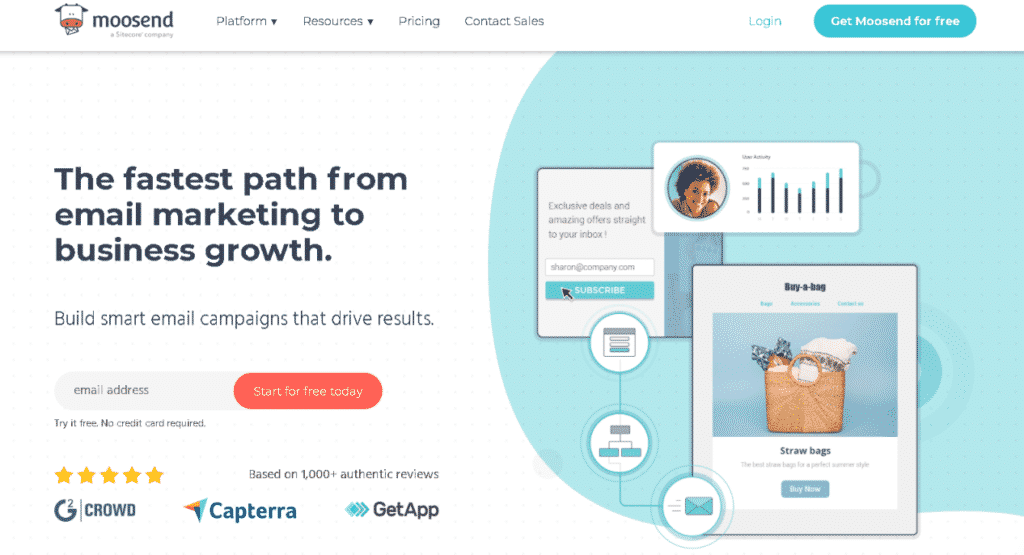
MailChimp is a great choice, especially if you’re not ready to invest in premium email software or service yet. Its free plan lets you add up to 2,000 subscribers and send up to 12,000 emails per month.
You can use the tools available on the free entry-level plan to design custom landing pages to promote your email list. These pages can focus on persuading visitors to join your membership site, without the content that’s usually on a WordPress page getting in the way. So, if you don’t the skills or the time to create your own custom landing pages for your membership site, then MailChimp is ideal for you.
The free plan also has an opt-in form builder that makes it easier to create stylish sign-up forms for your newsletters and mini courses.
ConvertKit
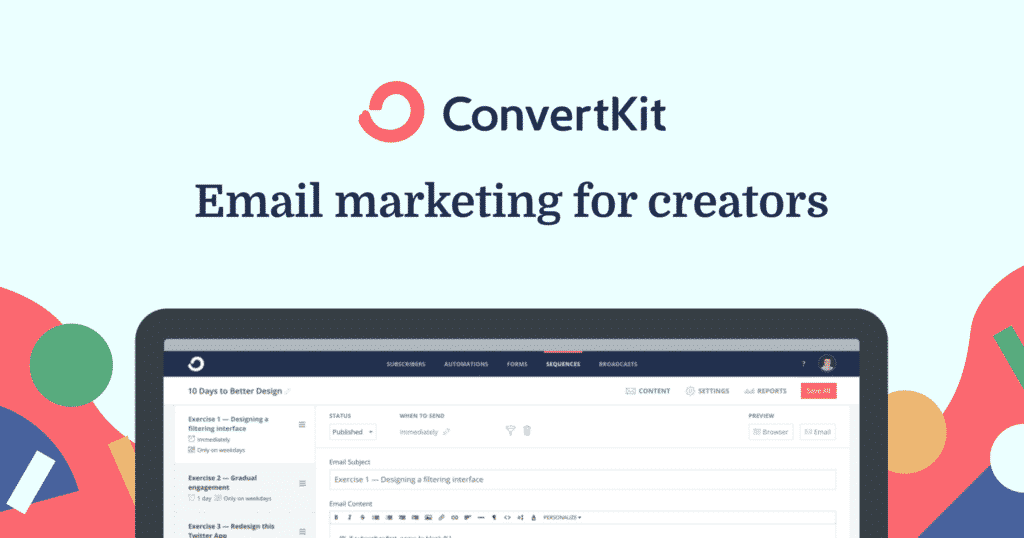
ConvertKit is one of the newest email software you can use to deliver your membership site content to your members. Because of its impressive features, stylish user interface, and focus on customer support. ConvertKit is a service you should consider.
You can avail of a free plan up to 1000 subscribers – If you use my referral link, we will both get 100 free subscribers added to our plan.
ConvertKit offers customizable sign-up forms and landing pages that you can easily display on WordPress. Also, it gives access to detailed user reporting.
Plus, it helps you to create automated emails that you can send when users meet specific requirements. And the drag-to-drop email sequence builder enables you to set up your list once and then get back to focusing on growing your membership site.
ConvertKit is ideal for membership sites, such as those running online courses and selling digital products.
Active Campaign

Active Campaign is the biggest name in email marketing software. But despite being a market leader, their plans start at an affordable rate $9 per month if you pay annually.
On their entry-level lite plan, you can send an unlimited number of emails and use the drag-to-drop feature to create attractive content for your members. However, the ability to remove the Active Campaign logo from your messages is reserved for high-priced customers.
With Active Campaign, you can segment your members into groups, such as potential new members and existing members, and send each group different content. You can even segment your members better and send messages to those who visit certain pages on your membership site. Plus, with Active Campaign, you can set up automated messages that go out to members who reach the last page of your membership site, with details about the next course.
WordPress Membership Sites
Regardless of what type of membership site you want to create, there are a few relevant concepts you should focus on.
You need members on that site. These members can be customers, users, or visitors; whatever you call them, but you’ll need a way to store information that belongs to those members, such as the type of access a member should have, the type of billing to associate with the member, and other details.
WordPress has a built-in system for members and capabilities, which you can leverage when building your membership site. Plus, it has some plugins that can help you convert a standard WordPress site into a membership site. This’ll allow you to have more potential for flexibility and personalization
You can learn why WordPress is the best platform to build a site on my previous article.
However, to create a successful WordPress membership site, you need to decide which plugins work best for your specific needs. Let’s go over the most used.
MemberPress
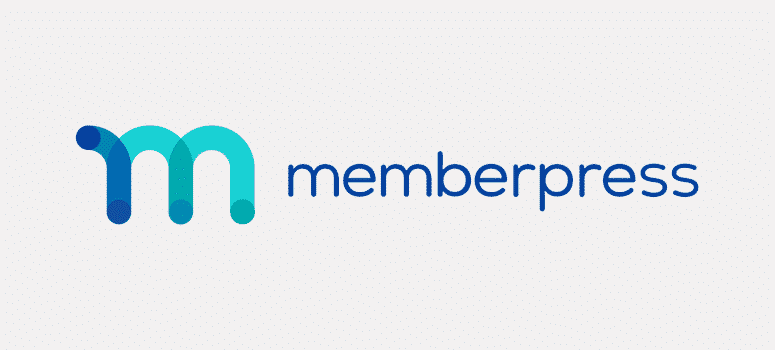
This is an easy-to-use WordPress Membership Plugin. This plugin is easy to install in your site and it can help you start charging for access instantly.
MemberPress allows you to create an unlimited number of product pages, and membership levels. Plus, it has other features such as coupon module, product groups that allow you to create a large-scale membership site, and access rules that allow you to create sophisticated membership levels. Also, its report feature tracks the latest insights in your business, and they help you optimize your site.
You will need to choose which plan you want to go with; price starts at $129 per year.
WishList Member
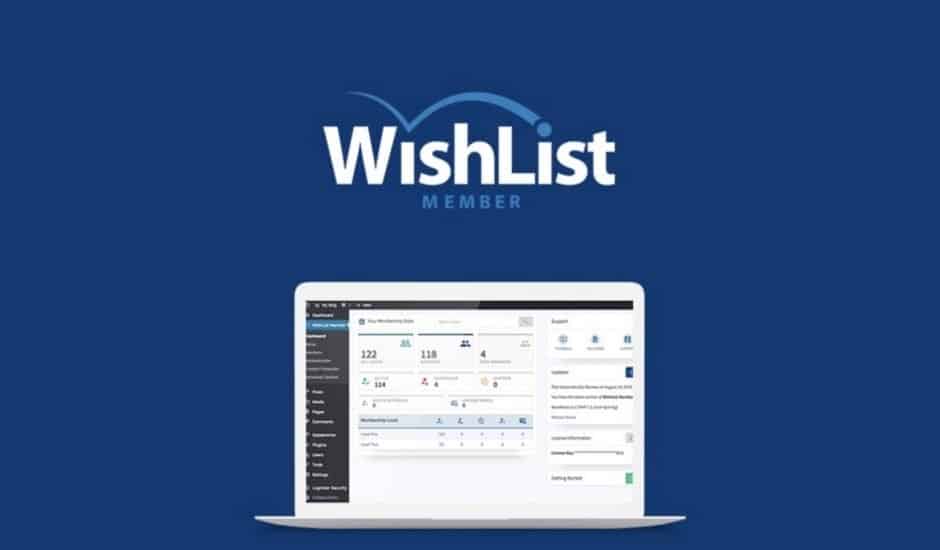
WishList Member can help you create a membership site on the fly, instead of spending days, or weeks to build a site that fully resembles your end goal—to allow members to view exclusive content and register for premium features.
With this platform, you can create many membership levels, and give your premium members timely updates. Plus, you easily integrate WishList Member with your current WordPress installation.
WishList Members also enables you to create a special ‘error’ message when non-members access your content.
WooCommerce Memberships
This is a popular killer e-commerce plugin. If you have products you want to sell and you’re looking to a membership option, this is a great option for you. You can create, sell courses and create membership levels all-in-one.
The plugin enables you to reward members and offer perks. You can sell specific courses to particular groups, such as existing members only.
WooCommerce Memberships is a plugin for restricting your site’s content. This plugin is easy to use and brings your content, shop, and memberships together in your WordPress install.
As a membership site owner, you put a lot of work into creating your exclusive content, so WooCommerce Memberships allows you to schedule when members can have access to your content. You can drip feed the content and you can require that one be a member for a certain period before accessing certain posts or pages.
Course Platforms
If you prefer something that is easy to use, you will want to look at course platforms. Regardless of the platform you select, you’ll get varying levels of flexibility of functionalities and design.
FG Funnels

This platform is more than just a course hosting platform. It’s a whole marketing and sales system for any business where you can create:
- A member area with native video hosting
- As many funnels as you want
- Unlimited domains to connect
- Infinite websites
- Booking systems with payment and forms
- Pipeline to follow your funnels or for your sales team
- Unlimited marketing automations with beautiful and intuitive workflows
I love this platform and is my first choice. Imagine that you do not have any other software’s bills for your business but this one – How would it feel like? For as little as $119 per month or $997 per year, you can start today here.
New Zenler
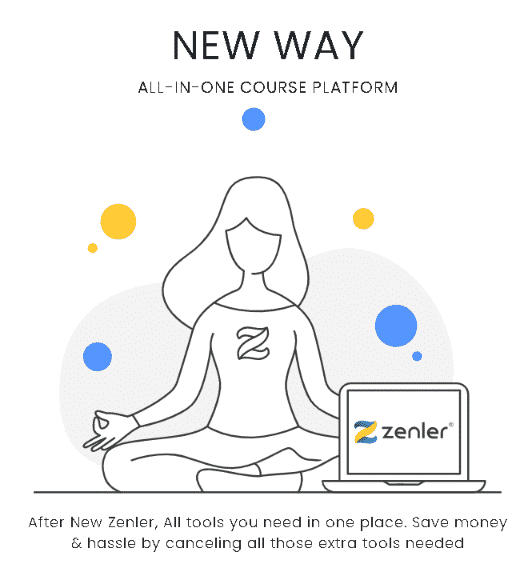
This platform is my 2nd choice after FG Funnels! It’s perfect if you are not too tech savvy. It’s super easy to use, and bring all the tool you need in one place to sell your courses, and membership.
The Pro plan is $647 per year which is very reasonable. The platform’s design is super modern, vey flexible.
By integrating with PayPal, and Stripe, you can offer free, onetime payment or recurring.
Teachable
This is a hosted platform for protecting content and selling in a membership system. It’s one of the popularly used platforms and its design is spectacular.
This platform is ideal for beginners, or people who don’t have a lot of tech experience. With this platform, you can create your membership site without worrying about hosting, design, or marketing integration.
Plus, you can host as many online courses and members as you want. Also, you can create a fully responsive membership site that offers members a consistent and learning experience across smartphones, laptops, tablets, and desktops.
Teachable, also allows you to customize your content with an intuitive user interface. You can create and design your homepage, courses, and sales pages to fit your audience’s needs.
Kajabi
This is an all-in-one hosted platform for creating membership sites and launching marketing campaigns.It offers solutions for everything from email marketing, hosting live events, drag-and-drop page builder all under one roof.
With Kajabi, you can create online courses and customize your content delivery. Plus, you’ll have access to done-for-you, user-friendly membership sites. However, the most important factor is how much time and resources you want to dedicate into the technical part of the membership site development. Remember, every second you spend worrying about the site design and functionalities is reducing the time you should spend creating killer content. If this is your first time, I recommend you keep things simple and painless with a hosted platform like Teachable.
What to consider to choose your container?
When deciding which online resource to use to create your membership site, think about the feature you can’t do without:
- Will you drip-feed content?
- What do you care about more, how easy it is to set up or customization options?
- Do you want it to include hosting?
- Are you giving a trial period?
- Can members cancel their membership on their own?
Final Thoughts
Membership sites are lucrative, but they’re not for everyone. However, if you’re committed, consistent, and you’re ready to put in the work, then creating a thriving membership site might be for you.
To succeed, all you must do is follow a sound, strategic game plan, choose the right pricing model, settle on a price, and decide if you should charge monthly or annually.
Hopefully, now, you’re feeling confident and have a handle on the basics that’ll help you get your membership site up and running in a few days.
This is the last article of the mini-series: Profitables Membership Blueprint.
- One: Is A Membership Right For You And Your Business?
- Two: What Type Of Membership Should You Consider To Create?
- Three: Content Creation: The lifeblood Of Your Membership Site
- Four: Membership Pricing Models and Delivery Methods
If you feel like you could use some help? (at least to start …) Book a free discovery call.
Don’t stop there! Share, bookmark it, and pin it!
